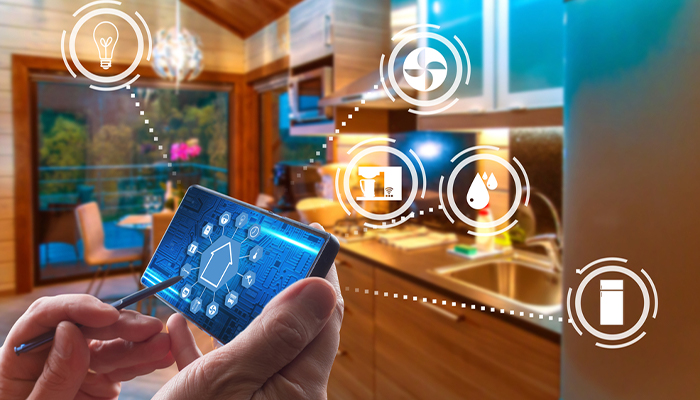The Ultimate Guide to Smart Home Managers: How to Streamline Your Home Automation

Introduction to Smart Home Managers
Welcome to the future of home automation! Imagine a world where your lights turn on as you walk in, your thermostat adjusts to the perfect temperature automatically, and your coffee starts brewing the moment you wake up. This isn’t just a dream – it’s the reality made possible by smart home managers. These innovative devices are revolutionizing the way we interact with our homes, making everyday tasks simpler and more convenient than ever before. If you’re ready to streamline your home automation experience, keep reading for our ultimate guide to smart home managers.
Benefits of Using a Smart Home Manager
Smart Home Managers offer a plethora of benefits that can enhance the convenience and efficiency of your daily life. By using a Smart Home Manager, you can seamlessly control various connected devices in your home from one centralized platform. This means no more juggling between different apps or remotes to manage your smart appliances.
One key advantage of utilizing a Smart Home Manager is the ability to create customized automation routines tailored to your specific needs and preferences. Imagine waking up to the soothing sounds of your favorite music playing, lights gradually brightening, and coffee brewing – all triggered by a single command or set schedule.
Additionally, Smart Home Managers provide real-time monitoring capabilities, allowing you to keep tabs on energy usage, security cameras, and even remotely lock doors while away from home. This level of control not only adds convenience but also contributes to increased safety and peace of mind for homeowners.
Moreover, many Smart Home Managers are compatible with voice assistants like Amazon Alexa or Google Assistant, enabling hands-free operation for an even more seamless user experience. The integration of voice commands further simplifies interactions with smart devices throughout your home.
In essence, embracing a Smart Home Manager empowers you to streamline tasks, save time and energy, improve security measures, and ultimately elevate the overall quality of living within your modern household.
Features to Look for in a Smart Home Manager
When considering a smart home manager, it’s essential to look for features that align with your needs and lifestyle. One key feature to prioritize is compatibility with various smart devices. Ensure that the manager can seamlessly integrate with popular brands like Philips Hue, Nest, or Amazon Echo.
Another important aspect to consider is user-friendliness. Look for a manager with an intuitive interface and easy setup process to simplify your home automation experience. Customization options are also crucial – choose a system that allows you to personalize settings according to your preferences.
Remote access capability is another must-have feature in a smart home manager. This enables you to control your devices from anywhere using your smartphone or tablet. Additionally, robust security features such as encryption and two-factor authentication can help protect your data and privacy.
Consider scalability when selecting a smart home manager. Opt for a system that can grow with your needs over time, accommodating additional devices and functionalities as you expand your smart home ecosystem.
Top Smart Home Manager Brands and Their Key Features
When it comes to choosing a smart home manager, there are several top brands that stand out in the market with their unique features and functionalities. One of the leading brands is Amazon Alexa, known for its voice control capabilities that allow you to manage your smart devices effortlessly through simple commands.
Another popular choice is Google Home, offering seamless integration with other Google services and a wide range of compatible smart home devices. Apple HomeKit is ideal for those already embedded in the Apple ecosystem, providing secure and intuitive control over various smart products.
Samsung SmartThings boasts versatility by supporting a variety of protocols like Zigbee and Z-Wave, making it easy to connect different types of devices. Hubitat Elevation appeals to tech-savvy users with its local processing capabilities, ensuring faster response times without relying on cloud servers. Each brand brings something unique to the table, catering to different preferences and needs in the realm of smart home management.
Setting Up Your Smart Home Manager: Step-by-Step Guide
So, you’ve decided to dive into the world of smart home automation by setting up your very own smart home manager. Exciting times ahead!
First things first, unbox your smart home manager device and make sure you have all the necessary components – typically a hub or control panel, sensors, and compatible devices like smart bulbs or thermostats.
Next, find a central location in your home for the hub where it can communicate effectively with all connected devices. Keep in mind that some hubs may require an ethernet connection while others work wirelessly via Wi-Fi.
Now comes the fun part – pairing your devices with the hub. Follow the manufacturer’s instructions to connect each device securely to ensure smooth operation. Don’t forget to download any required apps for remote access and control.
Once everything is connected, test each device to confirm they are responding correctly through the app or control panel. Adjust settings as needed and explore automation options based on your preferences.
Take some time to familiarize yourself with how everything works together. Experiment with creating routines and scheduling tasks to maximize efficiency and convenience in managing your smart home system.
Troubleshooting Common Issues with Smart Home Managers
Are you facing issues with your smart home manager? Don’t worry, troubleshooting common problems is part of the process. One frequent issue users encounter is connectivity issues between devices and the manager. This can often be resolved by ensuring all devices are properly connected to the network.
Another common problem is compatibility issues with certain devices or brands. To tackle this, make sure to check for updates and firmware upgrades that might resolve these conflicts. If your smart home manager seems unresponsive, try restarting it or resetting it to factory settings as a last resort.
Interference from other electronic devices can also disrupt the functionality of your smart home system. Keep other electronics away from your setup to minimize interference. If you’re still experiencing difficulties, reaching out to customer support for assistance can help troubleshoot more complex issues efficiently.

Future of Smart Home Management: Emerging Technologies and Trends
As technology continues to advance at a rapid pace, the future of smart home management looks promising with exciting emerging technologies and trends on the horizon. One key trend is the integration of artificial intelligence (AI) into smart home managers, allowing for more personalized and intuitive automation.
Voice control capabilities are also expected to become even more sophisticated, enabling homeowners to interact with their smart devices in a more natural and seamless way. Additionally, increased connectivity between different devices and systems within the home will lead to a more integrated and cohesive smart ecosystem.
The rise of 5G technology will further enhance the performance and reliability of smart home devices, providing faster connection speeds and lower latency. Moreover, advancements in data security protocols will continue to be a top priority as users seek peace of mind when it comes to protecting their personal information in an increasingly connected world.
The future of smart home management holds great potential for making our lives easier, safer, and more efficient through innovative technologies and ongoing developments in the field.
Conclusion
As smart home technology continues to evolve, the role of smart home managers becomes increasingly important in streamlining and optimizing our connected homes. By centralizing control and automation, smart home managers offer convenience, efficiency, and peace of mind to homeowners.
With the benefits of remote access, energy savings, security enhancements, and personalized customization, investing in a smart home manager can truly revolutionize your living space. Look for key features like compatibility with various devices, user-friendly interfaces, automation capabilities, and reliable customer support when choosing a smart home manager that suits your needs.
As we embrace the future of interconnected devices and emerging technologies like AI integration and voice control commands, the possibilities for enhancing our daily lives through smart home management are limitless. Stay informed about new advancements in the field to make the most out of your automated ecosystem.
Make your life easier by embracing the power of a smart home manager to simplify tasks and create a more efficient living environment tailored to your preferences. Take charge of your connected devices with confidence knowing that you have a centralized hub managing it all seamlessly. Welcome to the era where technology meets convenience – welcome to the world of smart home management!




